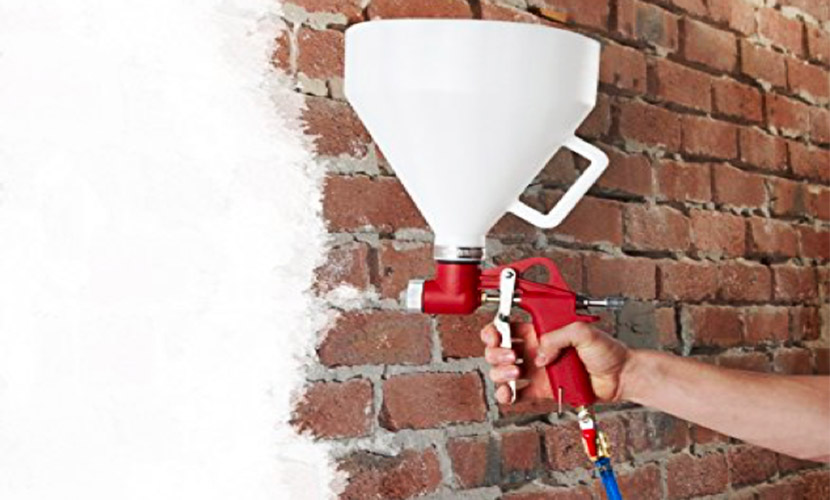
SALT EXTRACTOR
Soluble salts are at the basis of every process of stone degradation. Treating the stone with DESAL will improve stone health. Salt extraction is possible at different depths of the stone, depending on porosity and characteristics of the stone itself.
DESAL is able to extract salts from every kind of surface
DESAL works on all natural and artificial porous stone materials and acts on a wide range of soluble salts.
Salt contamination
Deterioration of the stone due to soluble salts depends of the stone structure and on ambient conditions and it can be described as follows:
Phase 1
The pores of the stone are full of saline water. When water evaporates, the salts will crystallize on the pores.
Phase 2
Crystallized salts will close the pores. The pressure caused by these pores will make the stone surface crack. As a consequence, all the weakest areas of the stone will be affected by these cracks.
Phase 3
As more water evaporates, more salts will continue to crystallize inside the pores.
How DESAL works.
The principle is based on the use of deionized water to facilitate dissolving od salts and the movement to the surface of soluble salts through prolonged contact with the material. (“transfer” of the slat to the surface is made it possible by the capacity of the DESAL to absorb solvent, in this case water). The product used for the paste contains natural materials, such as high-purity cellulose pulp, that guarantee that the technique can be used on different types of natural and artificial stone substrates. The application time can be determined via preliminary tests on the surface itself, so as to optimize the cleaning process, using conductivity analysis on pulp samples taken at pre-fixed intervals (extraction procedures according to UNI 11087 norm) to determine the treatment efficiency curve. Times generally vary from 24-48 hours.

Pre-mix
Pre-mix the compound with deionized water around 8 hours before application (max conductivity 5 S/cm) in the following proportions: - 1 part (weight) of powdered mix. - 1.5 parts (weight) deionized water. Mix until the product is completely hydrated with a thorough manual action or using an electrical mixer. At the end of the process, seal the container with the cover and leave to hydrate for 8 hours. Before application add a further 1/4 or 1/2 part (weight) of deionized water with respect to the dry powder mass and mix the compound that is now ready for use. (E.g. for the previous pre-mixed compound add a further 0.5 liters of water). Remove all surface deposits with manual brushing with a soft bristled brush. In particular, eliminate salt efflorescence and powder deposits so that the surface is prepared for the extraction of soluble salts. The product action can be improved by spraying with deionized water, waiting around 15 minutes until the water penetrates into the pores of the material before applying the compound.
Application of DESAL
The product can be applied on the surface in the following ways:
Manual Application
Apply the product manually using a spatula, to create a uniform layer (1.5-2.5 cm) on the surface for treatment.
Mechanical application via nebulizer
You can apply the product with a standard-type compressor gun for plaster, verifying the adhesion characteristics of the surface beforehand. After application smooth the surface with a spatula to achieve a uniform thickness (1.5-2.5 cm). Average consumption is approx. 6.5 kg of powdered material per square meter.
Stesura Manuale IBIX Desal

Stesura mediante spruzzatore IBIX Desal

Notes
Before the application, the surface must be mechanically cleaned beforehand with a brush so as to remove the deposits of crystal salts, also, the surface must not be consolidated before salt extraction. The depth of the reclaimable layer for extraction depends on the chemical/physical features of the material and can be determined via the specific lab analysis of transverse sections of material, taking samples from the surface. DESAL cannot be used on stones previously treated with waterproof sealers because this would block water absorption and salt extraction.
Istruction
In unfavorable environmental conditions (high temperatures, presence of strong winds and dry air) you can improve the effectiveness of the product by applying a protective layer that limits the evaporation speed of the water such as a polyethylene film (or similar material). This protection guarantees that the action time of the deionized water is kept at a sufficiently high level for complete extraction of the salts from the pores of the stone. After the extraction process is concluded, the dry paste containing the extracted salts can be manually removed with a spatula. You can use a soft bristled brush or soft dampened sponge to clean residues from the surface.
Productivity
Average consumption is approx. 6.5 kg of material (powder without water) per square meter.
Contact us!
A team of dedicated professionals will answer to all your questions.
 English (UK)
English (UK)  Italiano (Italia)
Italiano (Italia)  Français (France)
Français (France)  Nederlands (nl-NL)
Nederlands (nl-NL) 